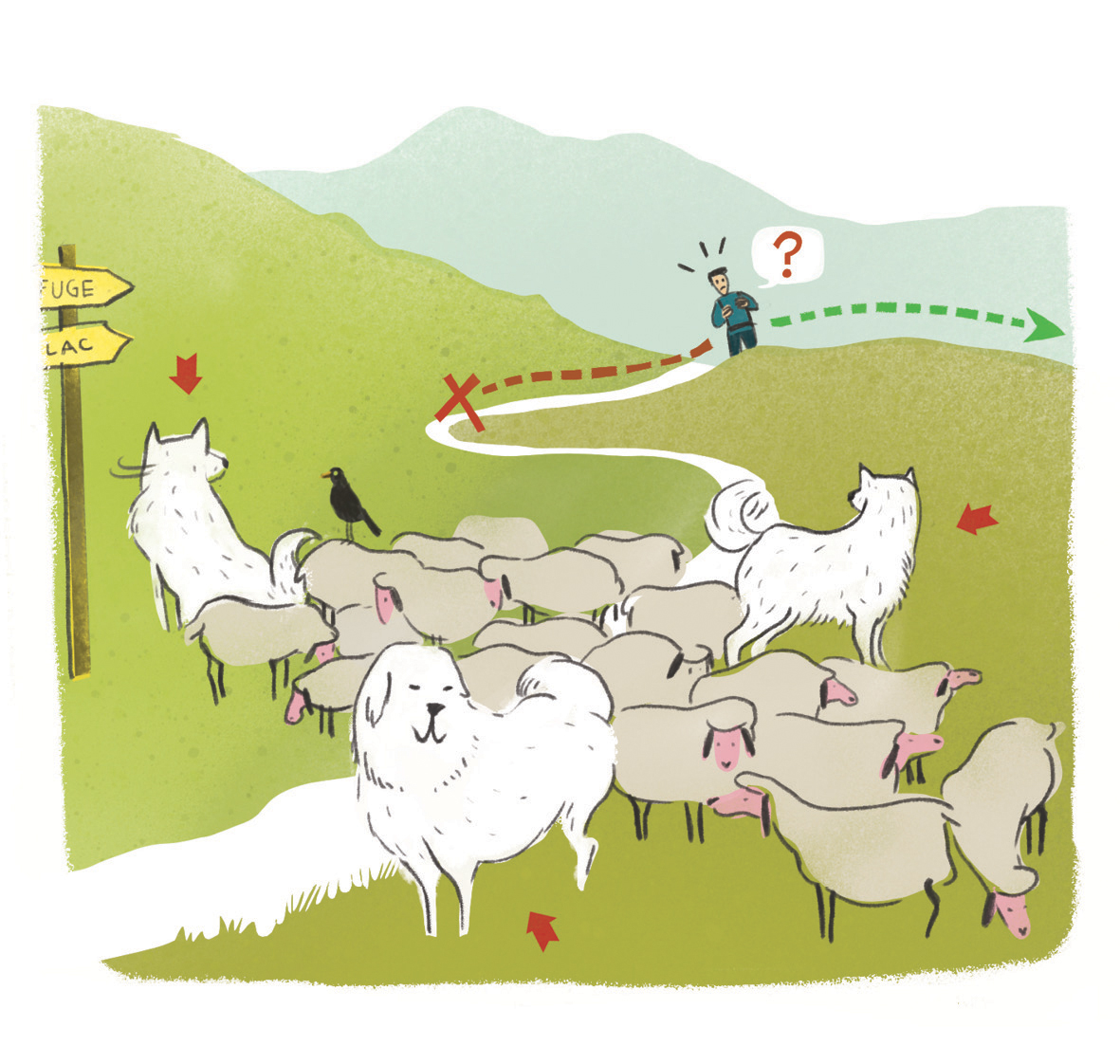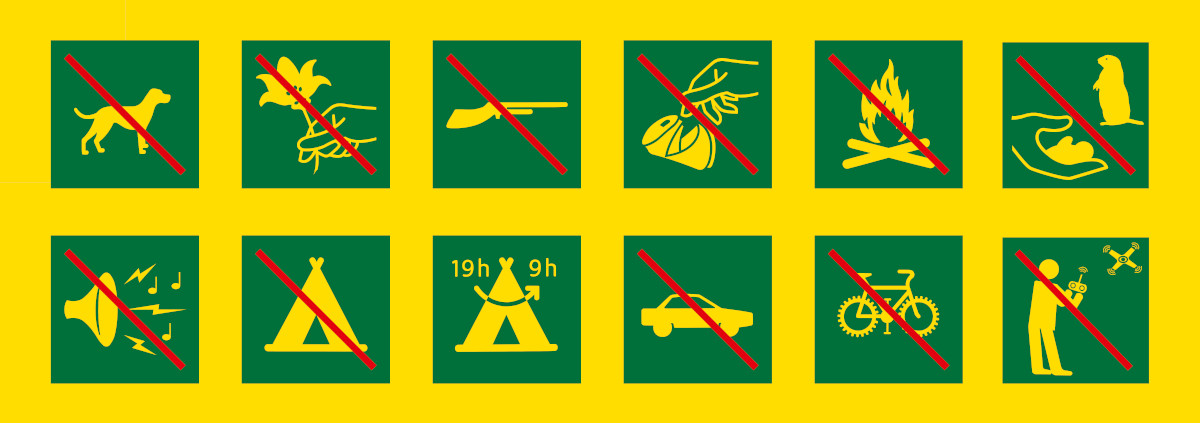The Pisse waterfall
After crossing the village and the meadows surrounded with rocks, the route is adorned with unruly waterfalls. The valley dug out of the crystalline mountains (granite and gneiss) forms the "U" shape characterising landscapes shaped by glaciers.
8 points of interest
 History
HistoryThe Désert-en-Valjouffrey
No sand or barren lands, the name of Desert comes from the word "essarter" which means to clear the land of forest in order to produce a clearing. Forest clearing was necessary for the implementation and the development of agriculture in the mountains... Nowadays, the Desert is one of the only hamlets at altitude which is inhabited all year round in spite of the harsh mountain climate.
 Know-how
Know-howHay Fields
The hayfields where the grass is mown have been improved over the generations by the extraction of stones which have then been stacked in piles which are known locally as “clapiers”. These piles of stones mark the boundaries between the crops and the flocks.
 Fauna
FaunaCommon Chiffchaff
A bird that you hear but do not see, the Common Chiffchaff nicknamed the "écu counter”. Its song, which is very easy to identify, evokes the sound of gold coins falling one by one in to the cash register as they are counted. Green-brown and greyish on top, its feathers are off white underneath, beige on the chest with a barely visible pale brow.
 Geology and geography
Geology and geographyGlacial valley
The high valley of Bonne, or Font Turbat, is a typical glacial valley in the form of a trough with morainic bars marking the stages of the retreat of the glacier. The lower shelves or glacial shoulders are suspended above the trough 500 to 600 m in size of which the steep sides dominate the layers of scree and the alluvial fans (mass of debris transported by the water It finishes upstream by a vast cirque at the imposing foot of the rocky wall of theOlan (3 564 m), hemmed in at its foot by the Maye black glacier. At the time of the last glaciation of Würm, 10 000 years ago , the two glaciers of Font Turbat and Maye joined together and fed into a powerful glacial tongue in the Bonne valley. It formed the valley in to the shape of a basin by scraping and polishing rocky walls in the granite. The lowest moraines, masses of rocky debris transported by the glaciers are situated around Châtellerat cabin.
 Flora
FloraCob web House Leek
Thick leaves organized in tight rosettes shoot up towards the sky twists of white hairs which are quite similar to the traps woven by certain spiders. Not less competitive than the rhododendrons, The Cobweb House Leek is adapted to resist drought. The main rosette and the smaller shoots well grouped together; make a real water reserve which is then marvelously stocked by the fleshy leaves... It also develops many kinds of hairs that collect the dew.
 Flora
FloraRhododendron
Nicknamed the rose of the devil, the rhododendron ferrugineum has the capacity of placing itself between the rocks and boulders where the soil is rare. It keeps its stiff leaves which are dark green and shiny and rust coloured underneath right through the winter. It gets its name from this rust colour. Every year, between the end of July and the beginning of August its branches are crowned with bouquets of flowers coloured rose and purple.
 Fauna
FaunaApollo
A big white butterfly with black and red markings is not shy; the Apollo is easy to see between the middle of June until the end of July... It lays its eggs on the White Stonecrop, a perennial plant with white flowers living on scree and gravel... The male Apollo is born before the female and waits patiently to procreate. It is to be noted that it benefits from national protection; its transport and destruction are forbidden.
 Fauna
FaunaWhite-throated Dipper
Easier to observe than the Common Chiffchaff, the White-throated Dipper lives beside rivers and mountain torrents... A little red and grey bird, with a short tail, it has a fine beak, a white mark on the chin and on the chest. This astonishing sparrow has the particularity of being able to walk under the water against the current in search of food. It flattens itself down and grips on to the bottom with its claws, opens its eyes, which are protected from the flow by a fine membrane and spots worms, larvae, little crustaceans and fish.
Description
- Departure : Le-Désert-en-Valjouffrey, Valjouffrey
- Towns crossed : Valjouffrey
Forecast
Altimetric profile
Sensitive areas
Alpine ibex
- Impacted practices:
- Aerial, , Land, Vertical
- Sensitivity periods:
- JunJulAugSep
- Contact:
- Parc National des Écrins
Julien Charron
julien.charron@ecrins-parcnational.fr
Recommandations
In summer, it can get very hot on the path (sunscreen, hats and water are essential, especially for children)
 In mountain pastures, protection dogs are there to protect the herds from predators (wolves, etc.).
In mountain pastures, protection dogs are there to protect the herds from predators (wolves, etc.).
When I hike I adapt my behavior by going around the herd and pausing for the dog to identify me.
Find out more about the actions to adopt with the article "Protection dogs: a context and actions to adopt".
Tell us about your meeting by answering this survey.
Information desks
Maison du Parc du Valbonnais
Place du Docteur Eyraud, 38740 Entraigues
Reception, information, temporary exhibition room, reading room and video-projection on demand. Shop: products and works of the Park. Free admission. All animations of the Park are free unless otherwise stated.
Transport
No transport services to the start of the trail.
Access and parking
From Entraigues, take the D117 to the village of Le Désert-en-Valjouffrey
Parking :
Accessibility
Source

Report a problem or an error
If you have found an error on this page or if you have noticed any problems during your hike, please report them to us here:


